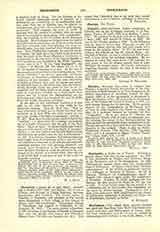

Chariopolis, a titular see of Thrace. Nothing is known about this city during antiquity. In 1087 it was plundered by Tselgou and Solomon, Kings of the Patzinaces and of the Hungarians. In 1205 Villehardouin passed there, after the unsuccessful siege of Adrianople. It figures only in later “Notitiae episcopatuum” of the twelfth or thirteenth century as a suffragan of Heracleia in Thrace. An act of Isidorus, Patriarch of Constantinople, dated August 13, 1347, places it again under the jurisdiction of Heracleia. Lequien (II, 1133) mentions but four bishops, the first present at Nicaea in 787, the last in 1351. It is not known when the see ceased to be a residential one for the Greeks; they frequently use the name for titular bishops. Chariopolis is now a little town with about 3000 inhabitants in the vilayet of Adrianople, northwest of Rodosto; the Turks call it Khairebolou, Aireboli, or Irebol.
S. PETRIDES

